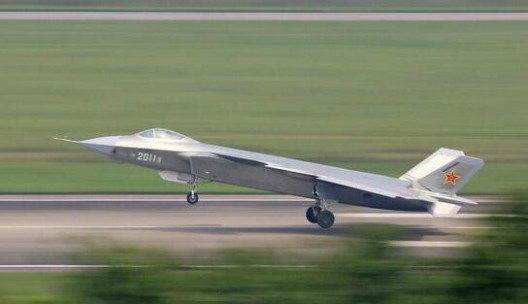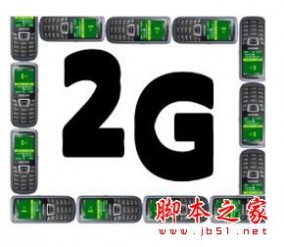一 : 外媒:中国武器技术正减少对外依赖 潜力超过欧洲
外媒报道称,日本外交学者网站3月8日发表了罗伯特·法利的题为《如果没有外国军事技术,中国的军事将会怎样?》的文章,原文编译如下:
中国对外国军事技术有多依赖呢?尽管中国在过去的20年间取得了巨大的进步,但这个问题的答案仍然是“很依赖”。但是这种依赖的原因十分复杂。无论如何,这种局面似乎正在迅速改变。
关于美国和中国之间竞争的许多讨论集中在美国的软肋上面。分析人士得出结论认为,如果无法直截了当地击败中国,中国可能威胁到美国侦察打击综合体的关键部位。

资料图片:中国歼-20隐身战机2011号原型机试飞。(图片来源于网络)
然而,与此同时,绝大多数中国技术依赖于从外国生产商那里获得的系统。毫不夸张地说,“辽宁”舰就是前苏联航母,而下一代中国航母很可能是那个设计的衍生版;红旗-9地空导弹系统包含从“爱国者”导弹系统衍生的技术;中国潜艇依赖好几代苏联技术(以及从美国那里获取的一些机密)。同样,中国的水面舰艇使用从俄罗斯或者西欧舰艇那里复制或者衍生的各种组件。
在航空航天方面,歼-10类似以色列的“幼狮”(以色列于20世纪70年代末自主研发的轻型战斗机,也采用鸭翼布局,本网注),歼-11、歼-15、歼-16以及歼-17显然是苏俄战机的克隆版或者衍生物。中国头号远程轰炸机轰-6是从苏联最早于1954年服役的图-16轰炸机衍生而来。正如我两个星期前所讨论的那样,中国很有可能复制了美国和其他国家的无人机技术。
长话短说,无论是中国军队还是中国国防工业都依赖于西欧和俄罗斯的技术。中国的核心成就是工程方面的;重新配置系统和部件,以生产更多致命武器。中国强大的巡航导弹和弹道导弹武库证明了这种做法的成功。
歼-20和歼-31隐身战机有可能改变这一切。尽管有证据表明,这两种战机依靠来自美国的信息,但它们似乎都代表了中国航空业的显著工程突破。它们具备令中国航空成就超过俄罗斯,并在一定程度超过欧洲人的潜力(虽然“阵风”和“台风”战机代表着中国尚无可比拟的成就)。歼-20和歼-31很有可能在韩国的KF-X或者日本的F-3战机服役之前就开始投入使用。
不过,虽然韩国和日本已经通过比中国更合法的手段获得美国技术,但它们仍然需要外国帮助。这也许是最重要的教训;中国国家创新体系不是唯一需要获得外国技术的。(也许)在美国之外,世界上所有的军工企业经常需要注入国际市场上的现有技术。制裁和出口管制阻止中国以韩国、日本、印度或者任何一个欧洲国家的方式获得这些技术。在此背景下,工业间谍并不是中国做生意的特有现象,而是对美国及其盟友强加的结构性限制做出的完全正常和可预见性的反应。
更多精彩!欢迎关注“科普中国-军事科技前沿”官方微信(jskjqy)。

二 : 中国将逐渐关闭2G网络 跟随欧洲国家步伐
随着中移动、联通、电信纷纷发表 "今年停止2G新建网络投资“,三大运营商宣布不再投入2G网络,但在短时期仍会对网络进行一些必要的优化和调整。由于2G建网更早,目前从市区到农村,基本都实现了覆盖。运营商增加基站的动力只有两个,一是覆盖更大区域,而是满足更多用户接入。

但是随着4G时代的到来,用户正在向新时代迁移,而此前GSM和CDMA等第二代的移动通信网络所占用的资源也就越来越重要,目前在全球范围,已有很多运营商宣布关闭第二代移动通信网络制式,大力推广4G网络。目前T-Mobile宣布,从6月21日开始,将逐步关闭CDMA网络,CDMA手机用户的服务将无法得到保障。
2007年,澳大利亚成为全世界第一个彻底关闭CDMA网络的国家,随后墨西哥、日本、印度、印度尼西亚、越南、孟加拉国、泰国、巴西等国的运营商,先后关闭了CDMA网络服务。在全球手机市场,CDMA手机也逐步被厂商放弃,消费者可选范围越来越小,这也推动手机用户切换到GSM家族网络或是直接升级到4G。

关闭网络和转移用户的最重要目的,是利用原先CDMA网络使用的无线电频率资源。T-Mobile目前正在推进4G网络的基站建设,而到目前为止,原先CDMA网络使用的无线电频率资源中,已经有八成用于4G网络。
中国电信将会做第一个放弃的主角:由于电信的2G/3G采用的是CDMA/EVDO技术,在4G时代是非常尴尬的,一方面CDMA技术不再发展,另一方面,CDMA和LTE技术的共存的问题。CDMA技术的限制成了电信发展最大的障碍。这种情况下看似电信在4G的竞争中处于最为不利的位置,但是换一个角度考虑,如果电信采用激进的做法,彻底的放弃CDMA/EVDO网络,将会获得最为有利的发展态势。虽然CDMA是电信的标志,但这不是电信主动选择的结果,也不是经济上最优化的结果。

由于FDD牌照问题,中国移动和联通电信的4G用户数相差巨大。中国移动宣布截至今年1月底,4G用户数已破1亿;联通公布的数字是,3G/4G用户1.51364亿,期望2015年底4G服务渗透率达到1亿户;中国电信公布的数据则是,截至2015年3月底,3G/4G用户数累计达1.2485亿户,其中4G终端用户数1675万户。

废除2G对运营商的利益:
1、频段资源。2G网络的900/1800MHz频段,是非常优质的,其覆盖范围好于目前的3G和4G频段。一旦2G用户完成了迁移,这部分频段被释放出来,将会给3G和4G网络带来很好的支持;一个小灵通的频段都被各方盯着红了眼,更别说2G的了;
2、基站物理空间。一旦2G停网,设备拆除,就有了更多空闲物理空间,来容纳新的设备。目前移动基站选址越来越难,机房空间变得越来越值钱,因此2G退网,将会为3G和4G部署带来好处;
3、优化维护成本。虽然2G不再新建,但网络优化和维护还是要做。基站天线用久了会老化,需要换新的,这都是成本。如果2G网络彻底退出,运营商将节省一大笔优化和运营费用;

4、用户迁移。如果能在合适的时间点停止2G网络,让用户全部迁移到3G和4G,将有可能提升运营商的数据业务收入。2G网络的大部分业务是语音,而3G、4G才是移动互联网的主要承载。让用户迁移到高速网络,才用可能使用更丰富的服务。
三 : 欧洲药典-凡例(中英文对照)86

欧洲药典-凡例
1.1. GENERAL STATEMENTS
The General Notices apply to all monographs and other texts of the European Pharmacopoeia. 总论的内容适用于各论和欧洲药典中的其它章节。
The official texts of the European Pharmacopoeia are published in English and French. Translations in other languages may be prepared by the signatory States of the European Pharmacopoeia Convention. In case of doubt or dispute, the English and French versions are alone authoritative.
欧洲药典以英语和法语形式发行,欧洲药典委员会的签署国可将药典内容译成其它语言,但若发生争议,应以英语和法语版为权威。
In the texts of the European Pharmacopoeia, the word "Pharmacopoeia" without qualification means the European Pharmacopoeia. The official abbreviation Ph. Eur. may be used to indicate the European Pharmacopoeia.
在欧洲药典中,如无特殊规定,“药典”是指欧洲药典,缩写 Ph. Eur.也指欧洲药典。
The use of the title or the subtitle of a monograph implies that the article complies with the requirements of the relevant monograph. Such references to monographs in the texts of the Pharmacopoeia are shown using the monograph title and reference number in italics.
文章中如果引用了各论中的标题和副标题意味着文章内容符合相关各论的要求。文章参考药典中各论内容时,以斜体的各论题目或相关数字表示。
A preparation must comply throughout its period of validity; a distinct period of validity and/or specifications for opened or broached containers may be decided by the competent authority. The subject of any other monograph must comply throughout its period of use. The period of validity that is assigned to any given article and the time from which that period is to be calculated are decided by the competent authority in the light of experimental results of stability studies.
药品在有效期内必须性质稳定,明确的有效期或说明应由权力机构批准。专论的题目在使用时必须一致。任何药品的有效期和有效期的起始时间由权力机构经稳定性研究的试验结果决定。 Unless otherwise indicated in the General Notices or in the monographs, statements in monographs constitute mandatory requirements. General chapters become mandatory when referred to in a monograph, unless such reference is made in a way that indicates that it is not the intention to make the text referred to mandatory but rather to cite it for information.
除总论和各论中另有说明,各论中的说明为法定要求;除为了提供特定信息,如果各论引用总论中内容时,总论为法定要求。
The active ingredients (medicinal substances), excipients (auxiliary substances), pharmaceutical preparations and other articles described in the monographs are intended for human and veterinary use (unless explicitly restricted to one of these uses). An article is not of Pharmacopoeia quality unless it complies with all the requirements stated in the monograph. This does not imply that performance of all the tests in a monograph is necessarily a prerequisite for a manufacturer in assessing compliance with the Pharmacopoeia before release of a product. The manufacturer may obtain assurance that a product is of Pharmacopoeia quality from data derived, for example, from validation studies of the manufacturing process and from in-process controls. Parametric release in circumstances deemed appropriate by the competent authority is thus not precluded by the need to comply with the Pharmacopoeia. The tests and assays described are the official methods upon which the standards of the Pharmacoooeia are based. With the agreement of the competent authority, alternative methods of analysis may be used for control purposes, provided that the methods used enable an unequivocal decision to be made as to whether
compliance with the standards of the monographs would be achieved if the official methods were used. In the event of doubt or dispute, the methods of analysis of the Pharmacopoeia are alone authoritative 各论中描述的有效成分(药用物质),赋形剂(辅料),药物制剂和其它成分用于人和兽的使用(除非明确限制不可使用)。一种药品只有在符合各论中各项要求时,才算药典中的药品。但并不要求药品上市前,供应商要做各论中的每项试验以满足药典要求。生产商可通过原始数据,例如生产过程验证,和过程控制,自检药品是否符合药典要求。权力机构认为充分的环境条件应符合药典要求。检测和试验方法应基于药典的标准.经权利机构允许可采用其它的分析方法以达到控制目的,若出现争论或异议,应以药典方法为准。
Certain materials that are the subject of a pharmacopoeia1 monograph may exist in different grades suitable for different purposes. Unless otherwise indicated in the monograph, the requirements apply to all grades of the material. In some monographs, particularly those on excipients, a list of
functionality-related characteristics that are important for the use of the substance may be appended to the monograph for information. Test methods for determination of one or more of these characteristics may be given, also for information.
药典各论中的某些物质有多个等级可满足各种需要,除各论中另有说明,要求适用于各等级。在一些各论中,特别是赋形剂,一系列相关的功能特性都有介绍,其中给出了一些特性的检测方法。 General monographs. Substances and preparations that are the subject of an individual monograph are also required to comply with relevant, applicable general monographs.
总论:各论中介绍的药物和制剂也应符合总论中的相关要求。
Cross-references to applicable general monographs are not normally given in individual monographs. 参照总论中的一些内容在各论中不特别指出。
General monographs apply to all substances and preparations within the scope of the Definition section of the general monograph, except where a preamble limits the application, for example to substances and preparations that are the
subject of a monograph of the Pharmacopoeia.
除非限定了适用条件,如规定适用于药典各论中的物质,总论的内容适用于各论定义范围内的所有药物和制剂。
General monographs on dosage forms apply to all preparations of the type defined. The requirements are not necessarily comprehensive for a given specific preparation and requirements additional to those prescribed in the general monograph may be imposed by the competent authority.
总论中介绍的剂量形式适用于典型定义的所有制剂。对于一特定制剂不必要对所有特性进行限定,一些要求可由相关的机构补充。
Conventional terms. The term "competent authority" means the national, supranational or international body or organisation vested with the authority for making decisions concerning the issue in question. It may, for example, be a national pharmacopoeia authority, a licensing authority or an official control laboratory.
惯用术语:“权力机构”是指对一些问题进行仲裁的国家、超国家、国际机构或授权组织。例如,国家药典委员会等。
The expression "unless otherwise justified and authorised" means that the requirements have to be met, unless the competent authority authorises a modification or an exemption where justified in a particular case.
“除另有批准”是指一些要求修改后,经权利机构允许的。
Statements containing the word "should" are informative or advisory.
一段话中出现“可以”是指此段描述作为信息提供或建议。
In certain monographs or other texts, the terms "suitable" and "appropriate" are used to describe a
reagent, micro-organism, test method etc.; if criteria for suitability are not described in the monograph, suitability is demonstrated
to the satisfaction of the competent authority.
在某些各论或文章中出现了“合适的”和“适当的”用于描述一种试剂、微生物、检测方法等;若各论中没有介绍适用性标准,适用性的论述应符合权力机构的要求。
Interchangeable methods. Certain general chapters contain a statement that the text in question is harmonised with the corresponding text of the Japanese Pharmacopoeia and/or the United States
Pharmacopeia and that these texts are interchangeable. This implies that if a substance or preparation is found to comply with a requirement using an interchangeable method from one of these pharmacopoeias it complies with the requirements of the European Pharmacopoeia. In the event of doubt or dispute, the text of the European Pharmacopoeia is alone authoritative.
可供选择的方法:一些章节中会出现这样的描述,此篇文章与JP或USP一致,这意味着一种药物或制剂采用JP或USP中的任意一种方法时,同样符合EP的要求。若出现争论或异议时,以EP为准。
1.2. OTHER PROVISIONS APPLYING
TO GENERAL CHAPTERS AND MONOGRAPHS
为总论和各论提供的信息
Quantities. In tests with numerical limits and assays, the quantity stated to be taken for examination is approximate. The amount actually used, which may deviate by not more than 10 per cent from that stated, is accurately weighed or measured and the result is calculated from this exact quantity. In tests where the limit is not numerical, but usually depends upon comparison with the behaviour of a reference in the same conditions, the stated quantity is taken for examination. Reagents are used in the prescribed amounts.
用量:用于试验的量有具体限度时,规定用于检测的量为一大约值。实际用量不得超过规定量的10%,由实际用量计算结果。对于限度无规定值的试验,限度依赖于相同条件下与对照品测试结果相比较,取规定量用于试验。使用规定量的试剂。
Quantities are weighed or measured with an accuracy commensurate with the indicated degree of precision. For weighings, the precision corresponds to plus or minus 5 units after the last figure stated (for example, 0.25 g is to be interpreted as 0.245 g to 0.255 g). For the measurement of volumes, if the figure after the decimal point is a zero or ends in a zero (for example, 10.0 ml or 0.50 ml), the volume is measured using a pipette, a volumetric flask or a burette, as appropriate; otherwise, a graduated
measuring cylinder or a graduated pipette may be used. Volumes stated in microlitres are measured using a micropipette or microsyringe.
用精密度和准确度相当的仪器量取一定量的被测物。称重时,精密度为末位数字的正负0.5个单位(例如,0.25g是指0.245-0.255g)。体积测量时,如果小数点后的数字为零或末位数字为零时(例如10.0ml或0.50ml),体积由吸液管、量瓶或滴定管测量 ;否则,用量筒或刻度吸量管测定。使用微量吸液管和微量注射器测量可精确到微升。
It is recognised, however, that in certain cases the precision with which quantities are stated does not correspond to the number of significant figures stated in a specified numerical limit. The weighings and measurements are then carried out with a sufficiently improved accuracy.
在某些情况下,如果精确度不符合要求,称重或测量时可通过提高准确度来弥补。
Apparatus and procedures. Volumetric glassware complies with Class A requirements of the appropriate International Standard issued by the International Organisation for Standardisation.
仪器和程序 玻璃量具应符合国际标准。
Unless otherwise prescribed, analytical procedures are carried out at a temperature between 15 "C and 25 "C.
除另有说明,分析过程在15-25℃条件下进行。
Unless otherwise prescribed, comparative tests are carried out using identical tubes of colourless,
transparent, neutral glass with a flat base; the volumes of liquid prescribed are for use with tubes having an internal diameter of 16 mm but tubes with a larger internal diameter may be used provided the volume of liquid used is adjusted (2.1.5). Equal volumes of the liquids to be compared are examined down the vertical axis of the tubes against a white background, or if necessary against a black background. The examination is carried out in diffuse light.
除另有说明外,用中性、无色、透明的平底同质试管进行对照试验;用内径为16mm的试管取规定量的液体试剂,若液体用量有调整可选用内径为其它规格的试管(2.1.5)。相同量的溶液以白色或黑色为背景水平方向进行对照试验,试验在漫射光条件下进行。
Any solvent required in a test or assay in which an indicator is to be used is previously neutralised to the indicator, unless a blank test is prescribed.
除有空白试验的情况下,用于试验的所有溶剂使用前应加入指示剂中和。
Water-bath. The term "water-bath" means a bath of boiling water unless water at another temperature is indicated. Other methods of heating may be substituted provided the temperature is near to but not higher than 100 "C or the indicated temperature.
水浴:除另有说明外,水浴是指在沸水中进行。若要求的温度在100℃以下或指定温度,可用其它的加热方法。
Drying and ignition to constant mass. The terms "dried to constant mass" and "ignited to constant mass" mean that 2 consecutive weighings do not differ by more than 0.5 mg, the second weighing following an additional period of drying or of ignition respectively appropriate to the nature and quantity of the residue.
干燥或炽灼至恒重:干燥或炽灼至恒重是指烘干或炽灼后,残渣两次连续称重偏差小于0.5mg。干燥或炽灼的第二次称重分别根据残渣的性质和量继续干燥或炽灼一定时间后进行。
Where drying is prescribed using one of the expressions "in a desiccator" or "in uacuo", it is carried out using the conditions described under 2.2.32. Loss on drying.
干燥是在干燥器或真空中进行,操作条件参见干燥失重(2.2.32)中所示。
REAGENTS 试剂
The proper conduct of the analytical procedures described in the Pharmacopoeia and the reliability of the results depend, in part, upon the quality of the reagents used. The reagents are described in general chapter 4. It is assumed that reagents of analytical grade are used; for some reagents, tests to determine suitability are included in the specifications.
药典中规定的分析方法和测试结果的可靠性依赖于所使用试剂的性质。试剂在总论4中有描述。一些情况下,试剂要求分析纯;对于其它一些试剂,适用性有其它规定。
SOLVENTS 溶剂
Where the name of the solvent is not stated, the term "solution" implies a solution in water.
溶剂如无特殊说明,溶液是指水溶液。
Where the use of water is specified or implied in the analytical procedures described in the
Pharmacopoeia or for the preparation of reagents, water complying with the requirements of the monograph on Purified water (0008) is used, except that for many purposes the requirements for
bacterial endotoxins (Purified water in bulk) and microbial contamination (Purified water in containers)
are not relevant. The term "distilled water" indicates purified water prepared by distillation.
药典中规定用于分析操作或制备试剂的水,应符合各论中纯化水(0008)的要求,被内毒素(批量的纯化水)或微生物污染(容器中的纯化水)后不得使用。蒸馏水是指纯化水经蒸馏后制得。 The term "ethanol" without qualification means anhydrous ethanol. The term "alcohol" without
qualification means ethanol (96 per cent). Other dilutions of ethanol are indicated by the term "ethanol" or "alcohol" followed by a statement of the percentage by volume of ethanol (C2H5O) required.
除另有特殊说明,"ethanol"是指无水乙醇,"alcohol"是指96%的乙醇。其它的乙醇稀溶液浓可用"ethanol"或"alcohol"表示,浓度用百分比表示(ml/ml).
EXPRESSION OF CONTENT 内容的说明
In defining content, the expression "per cent" is used according to circumstances with one of two meanings:
- per cent m/m (percentage, mass in mass) expresses the number of grams of substance in 100 grams of final product,
- per cent V f l (percentage, volume in volume) expresses the number of millilitres of substance in 100 millilitres of final product.
The expression "parts per million (ppm)" refers to mass in mass, unless otherwise specified.
在定义的内容中,百分比有以下两个含义:
%(g/g) 表示100g溶液中含有溶质若干克;
%(ml/ml) 表示100ml溶液中含有溶质若干毫升;
ppm 表示溶质的含量为百万分之几。
TEMPERATURE 温度
Where an analytical procedure describes temperature without a figure, the general terms used have the following meaning:
- in a deep-freeze : below - 15 "C,
- in a refrigerator: 2 "C to 8 "C,
- cold or cool: 8 "C to 15 "C,
- room temperature: 15 "C to 25 "C.
如分析操作中所规定的温度无具体描述,通常使用的术语的含义如下所示:
-低温冷冻:-15℃以下
-冷藏柜中:2-8℃
-冷却:8-15℃
-室温:15-25℃
1.3. GENERAL CHAPTERS CONTAINERS
1.3.总论内容
Materials used for containers are described in general chapter 3.1. General names used for materials, particularly plastic materials, each cover a range of products varying not only in the properties of the principal constituent but also in the additives used. The test methods and limits for materials depend on the formulation and are therefore applicable only for materials whose formulation is covered by the preamble to the specification. The use of materials with different formulations, and the test methods and limits applied to them, are subject to agreement by the competent authority.
用于制作包材的原料在总论3.1中有描述。原料的统称,特别是塑料材质,每种都包含一系列性质和添加物不同的产品。原料的测试方法和限度依赖于它的组成成分,所以只适用于组成成分明确的原料检测。组成成分不同的原料检测方法不同,具体的检测方法由权力机构决定。
The specifications for containers in general chapter 3.2 have been developed for general application to
欧洲药典-凡例(中英文对照)86_欧洲药典
containers of the stated category but in view of the wide variety of containers available and possible new developments, the publication of a specification does not exclude the use, in justified circumstances, of containers that comply with other specifications, subject to agreement by the competent authority.
总论3.2中描述的包材规格适用于一般的分类,但考虑到包材规格的可变性,只要满足权力机构的要求,其它规格也可使用。
Reference may be made within the monographs of the Pharmacopoeia to the definitions and
specifications for containers provided in chapter 3.2. Containers. The general monographs for
pharmaceutical dosage forms may, under the heading Definition/Production, require the use of certain types of container; certain other monographs may, under the heading Storage, indicate the type of container that is recommended for use.
药典各论中使用的包材可选用总论3.2中介绍的类型。各论中药物剂量形式中,在标题规定/产品下可能规定使用的包材规格;有些各论中会在标题贮藏下指出建议使用的包材规格。
6
本文标题:欧洲国家中英文对照-外媒:中国武器技术正减少对外依赖 潜力超过欧洲61阅读| 精彩专题| 最新文章| 热门文章| 苏ICP备13036349号-1